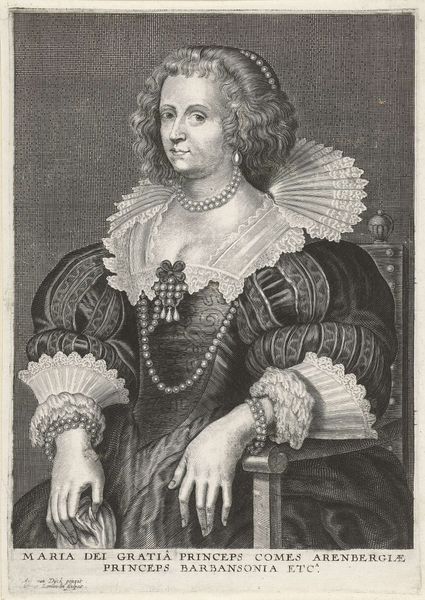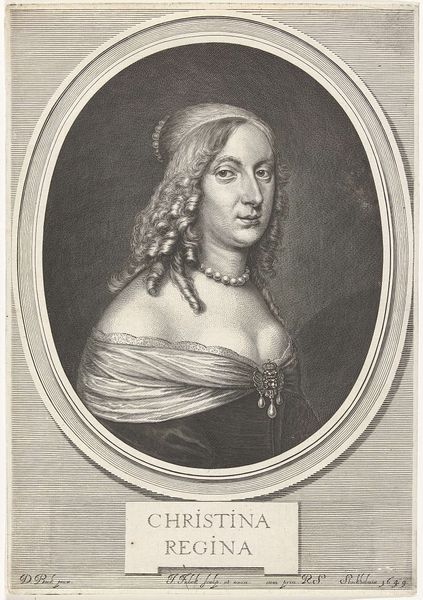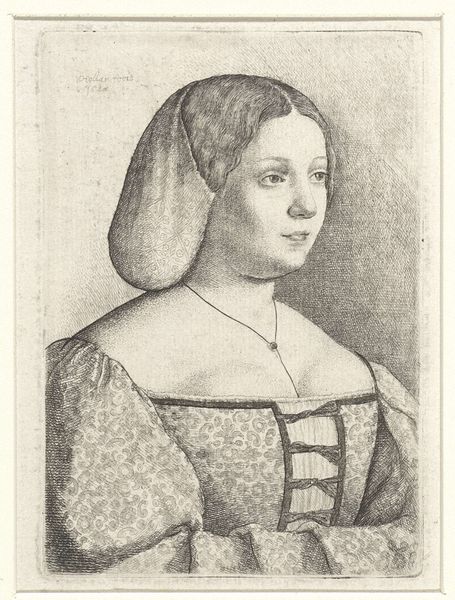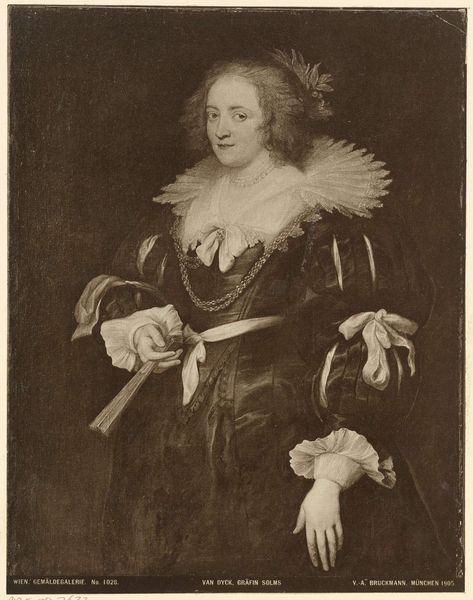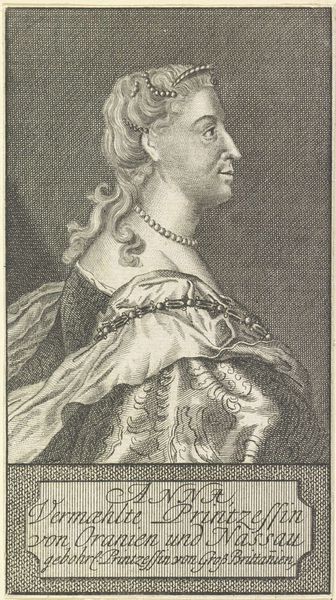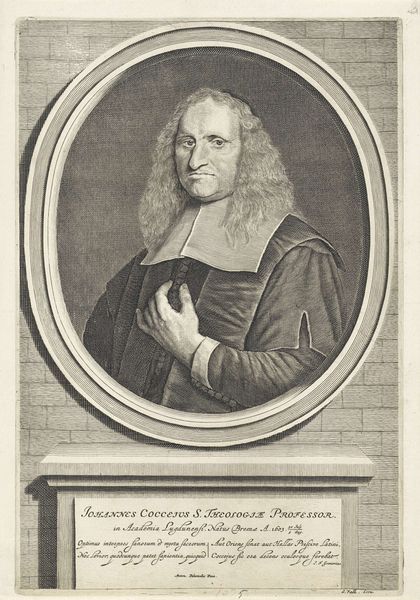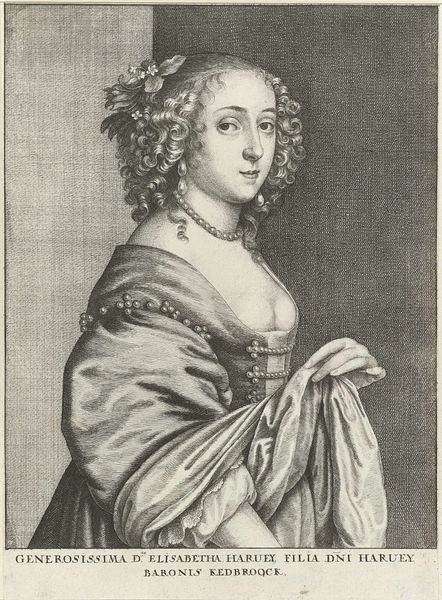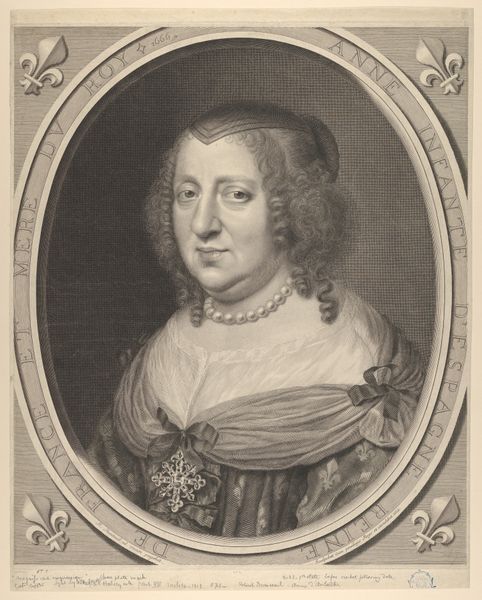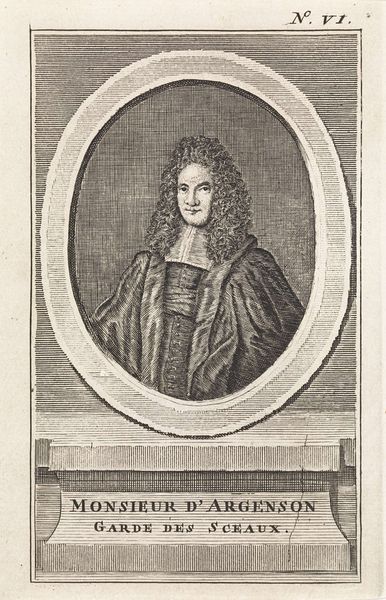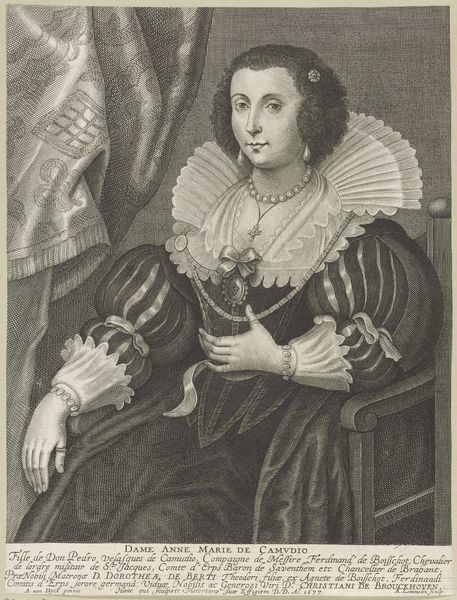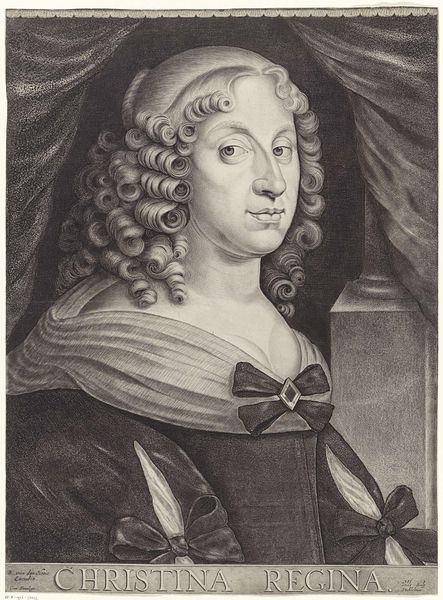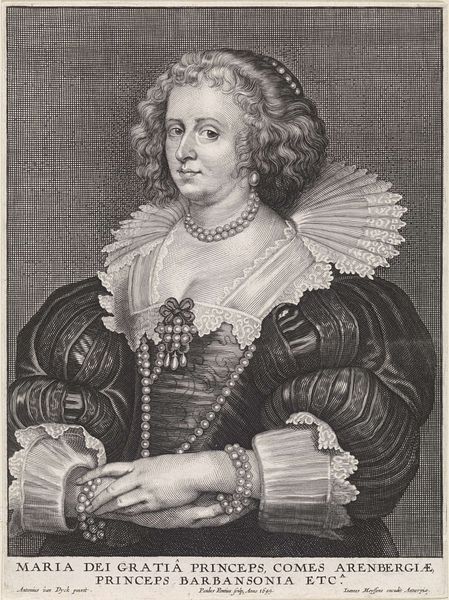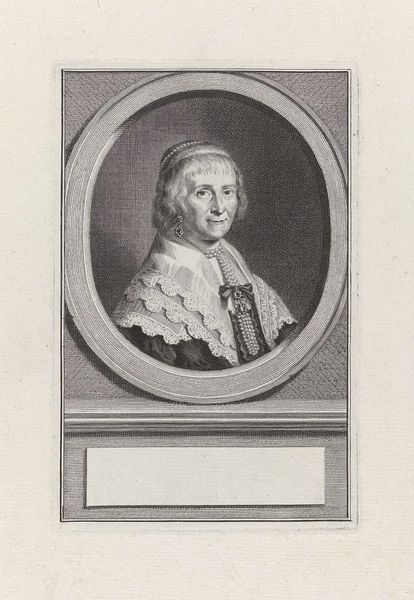
print, engraving
#
portrait
#
baroque
# print
#
line
#
engraving
Dimensions: height 254 mm, width 190 mm
Copyright: Rijks Museum: Open Domain
Curator: Let's delve into this captivating portrait of Catharina Cornaro, crafted between 1650 and 1651 by Wenceslaus Hollar. The artwork is an engraving, offering us a glimpse into a bygone era. Editor: My initial impression is of a somber and restrained composition, almost muted despite the intricacy of the lines. There is something undeniably serene about the woman's expression, the light reflecting on her wavy hair. The framing also emphasizes her hands. Curator: Cornaro's story is intriguing. Born into Venetian nobility, she married the King of Cyprus but was soon widowed, becoming a pawn in Venice's political ambitions. Viewing this work, it prompts questions about how gender, power, and Venetian imperialism played out through portraiture. This image almost creates her as a myth. Editor: Indeed, but what strikes me most is Hollar’s skillful use of line. Observe the textures he creates – the soft rendering of her skin, the subtle sheen of her garment. And consider the lines of perspective which dictate her positioning on the composition: every stroke adds to the structured feeling. This order helps tell her story in itself. Curator: I agree. It highlights how printmaking democratized access to images of powerful figures, but, often at a great personal cost. Catharina becomes less a woman and more a symbol—both revered and confined by her role. Editor: Precisely! I think this very fine execution highlights what is seen to be her inherent nobility; the structural detail helps to demonstrate that she had inherited a position, as opposed to forged it. Curator: Seeing it through this lens, examining the artistic techniques and the woman represented makes this work relevant for discussions around gender roles and power dynamics, even today. Editor: Agreed. This close examination showcases how meticulous design principles have always played a role in shaping identity, from the sitter's likeness to the societal values represented within the piece.
Comments
No comments
Be the first to comment and join the conversation on the ultimate creative platform.
